The Monstera plant, often called the “Swiss Cheese Plant” because of its unique perforated leaves, has surged in popularity as a stunning indoor plant that adds a tropical vibe to any space. With its lush, dramatic foliage, the Monstera deliciosa is not just a plant — it’s a statement piece. However, while it’s admired for its beauty, many new plant parents wonder how to care for a Monstera indoors properly.
If you want your Monstera to flourish and become a vibrant focal point in your home, this detailed guide will help you master the art of Monstera care indoors. From lighting and watering tips to humidity, feeding, pruning, and troubleshooting common issues, learn how to nurture your Monstera efficiently and effortlessly.
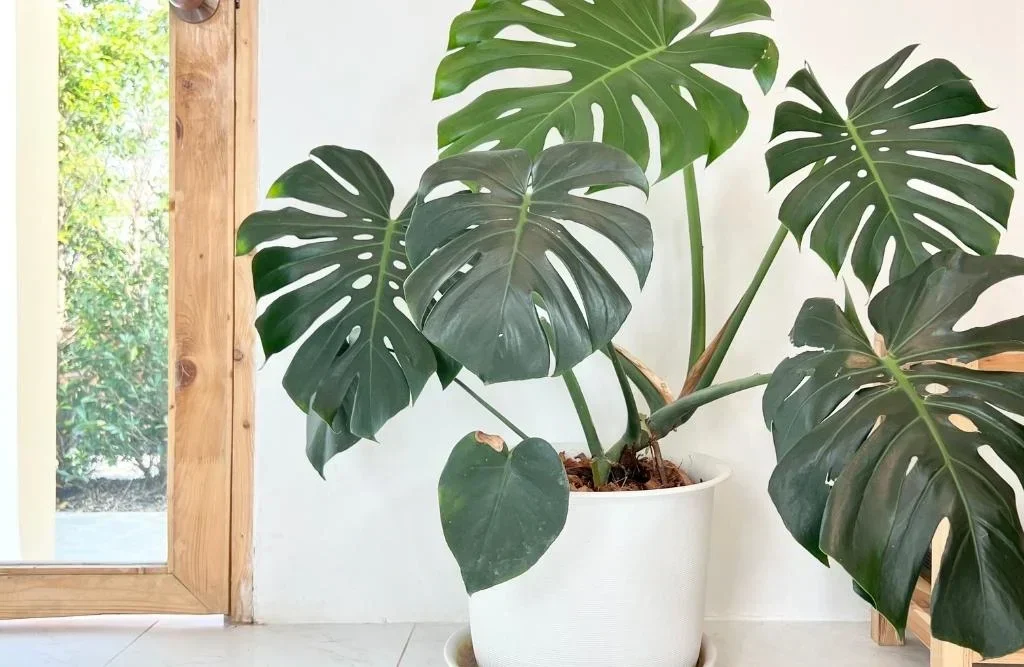
Understanding the Monstera Plant
Native to the tropical rainforests of Central America, the Monstera deliciosa thrives in warm, humid environments with indirect sunlight. In its natural habitat, it climbs trees and develops large, fenestrated leaves — the characteristic holes and splits that make it so eye-catching.
Indoors, Monstera adapts well as a houseplant, but replicating its natural environment with the right care is key to keeping it healthy and promoting those signature leaf holes.
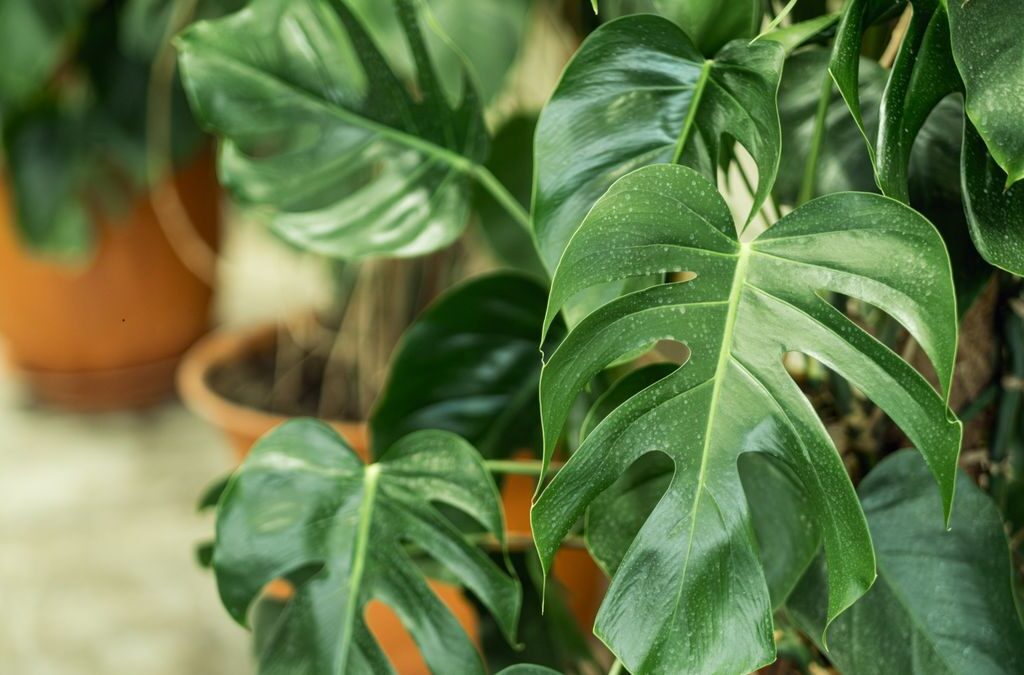
Choosing the Right Spot: Lighting for Indoor Monsteras
Ideal Light Conditions
- Monstera plants prefer bright, indirect light.
- Avoid direct sunlight, especially harsh afternoon rays, which can scorch the leaves and cause browning.
- A spot near an east-facing window is perfect, where they receive gentle morning sun.
- If natural light is limited, Monsteras can tolerate lower light but may grow more slowly and produce fewer fenestrations.
Signs of Lighting Issues
- Too much direct light: Leaves develop yellow or brown scorch marks.
- Too little light: Leaves become small, solid (no holes), and the plant may become leggy.
Tip: Rotate your Monstera every few weeks to ensure even growth and light exposure on all sides.
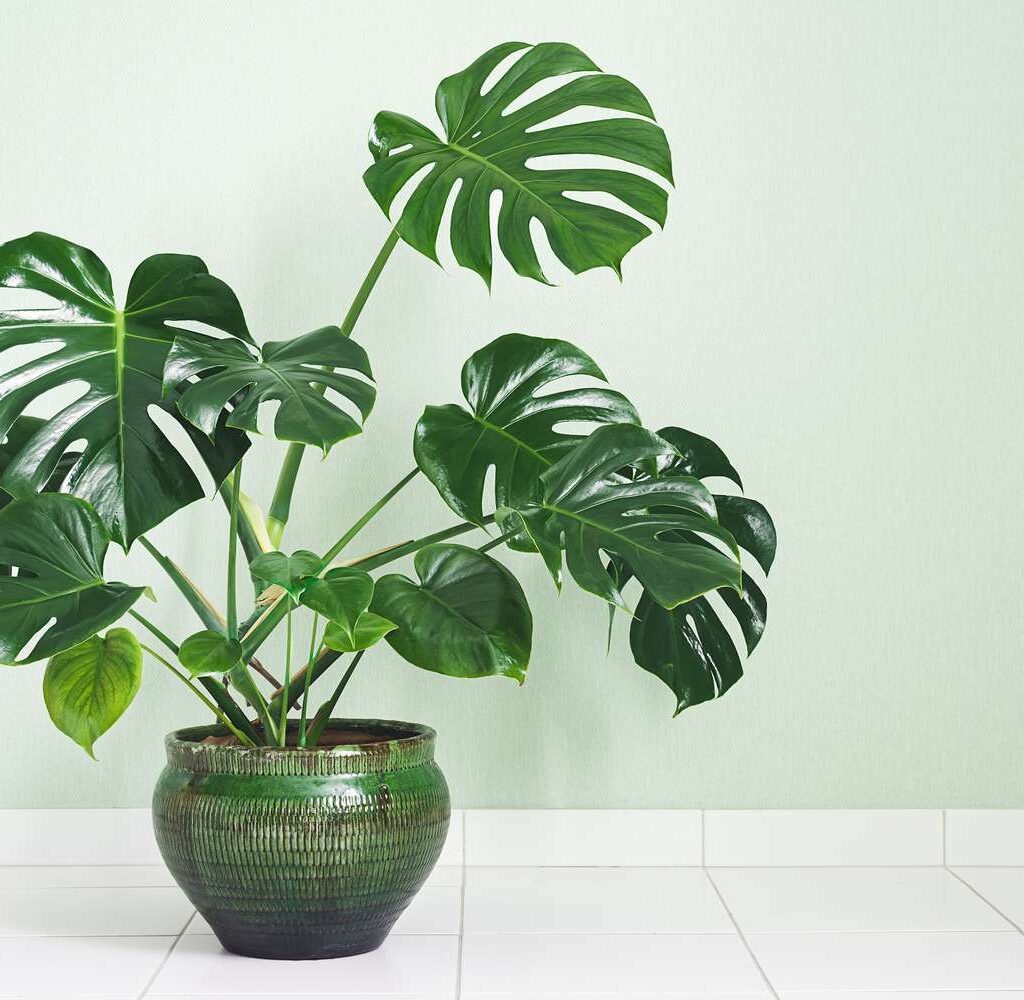
Watering Your Monstera: Getting It Just Right
Watering is one of the most crucial parts of Monstera care. Overwatering or underwatering can cause stress or even kill the plant.
When to Water
- Water your Monstera when the top 2 inches (5 cm) of soil feels dry.
- Typically, this means watering about once a week during growing seasons (spring and summer) and less frequently in winter.
- Check the soil moisture by sticking your finger into the soil or using a moisture meter.
How to Water
- Water thoroughly until excess water drains out the bottom of the pot.
- Empty any water from the saucer to prevent root rot.
- Use room-temperature water for best results.
Common Watering Mistakes
- Overwatering: Leads to root rot; symptoms include yellowing leaves and mushy stems.
- Underwatering: Causes drooping, dry, crispy leaves.
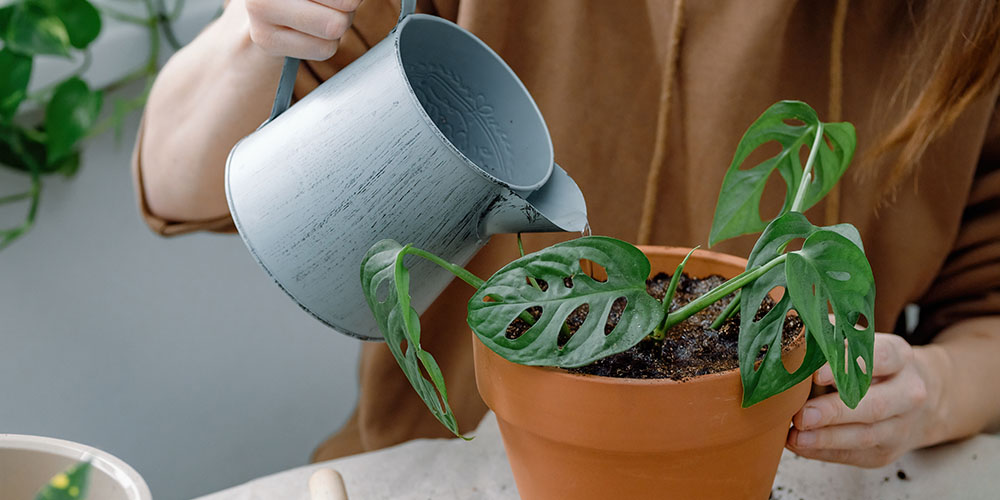
Humidity and Temperature: Creating a Tropical Environment
Because Monsteras are tropical plants, they thrive in higher humidity levels.
Ideal Humidity
- Aim for 40% to 60% humidity.
- If your home is dry (especially in winter), increase humidity by:
- Using a humidifier nearby.
- Placing the plant on a humidity tray with water and pebbles.
- Grouping it with other plants to create a moist microclimate.
- Lightly misting the leaves occasionally, but avoid soaking.
Temperature Range
- Monsteras prefer temperatures between 65°F to 85°F (18°C to 29°C).
- Avoid cold drafts, sudden temperature drops, and heating vents.
- Protect your Monstera from temperatures below 50°F (10°C).
Choosing the Right Pot and Soil for Monstera
Potting Mix
- Use a well-draining, aerated potting mix designed for aroids or tropical plants.
- Ideal mixes contain a blend of peat moss, pine bark, perlite, and sometimes orchid bark.
- Good drainage is essential to prevent waterlogging.
Pot Selection
- Choose a pot with drainage holes.
- Monsteras can grow large, so select a pot size that accommodates root growth but doesn’t overwhelm the plant.
- Repot every 1-2 years or when roots become crowded.
Feeding Your Monstera: Fertilization Tips
Monsteras are moderate feeders and benefit from regular fertilization during the growing season.
Fertilizer Type
- Use a balanced, water-soluble fertilizer (e.g., 20-20-20) or one formulated specifically for foliage plants.
- Organic options like fish emulsion or seaweed extract are gentle and effective.
Feeding Schedule
- Fertilize once a month in spring and summer.
- Reduce feeding in fall and winter when the plant’s growth slows.
Pruning and Training Your Monstera
Why Prune?
- Pruning helps maintain the plant’s shape and encourages bushier growth.
- Remove yellow, damaged, or dead leaves to keep the plant healthy.
- Trim long aerial roots if they become unruly or guide them towards the soil for extra support.
Supporting Growth
- Monsteras are natural climbers. Use a moss pole or trellis to support vertical growth.
- Tying vines gently to a moss pole encourages larger leaves with more fenestrations.
Common Monstera Problems and How to Fix Them
| Problem | Symptoms | Solutions |
|---|---|---|
| Yellow Leaves | Overwatering or poor drainage | Reduce watering, improve drainage, repot if needed |
| Brown Leaf Tips | Low humidity, underwatering, or fluoride in water | Increase humidity, water properly, use filtered water |
| Leggy Growth | Insufficient light | Move to brighter indirect light |
| Pests (Spider mites, mealybugs) | Small webs, sticky residue, or white cottony spots | Wipe leaves with soapy water, use neem oil spray |
| No Leaf Fenestrations | Young plant or lack of light | Provide more indirect light, patience |
Propagating Your Monstera Indoors
One of the fun parts of Monstera care is propagation. You can multiply your plant easily using stem cuttings.
How to Propagate:
- Select a healthy vine with at least one node (where the leaf meets the stem).
- Cut just below the node.
- Place the cutting in water or moist soil.
- Roots typically appear in 2-4 weeks.
- Once roots are a few inches long, plant the cutting in soil.
Additional Tips for Thriving Monstera Plants
- Clean the leaves: Dust blocks sunlight, so wipe leaves gently with a damp cloth every few weeks.
- Avoid sudden changes: Monsteras like consistent conditions. Avoid moving them frequently.
- Watch for stress signs: Drooping leaves, browning, or stunted growth often signal environmental issues.
- Enjoy the process: Monsteras grow quickly and can become large, dramatic plants — patience and regular care pay off!
Conclusion
The Monstera deliciosa is a versatile, beautiful houseplant that can transform any indoor space with its lush, tropical leaves. With the right care — providing bright, indirect light, balanced watering, proper humidity, and occasional feeding — you can keep your Monstera thriving for years.
Whether you’re a beginner or a seasoned plant enthusiast, understanding your Monstera’s needs and replicating its natural environment indoors is the secret to success. Embrace the journey, and enjoy the beauty and vitality your Monstera brings to your home.

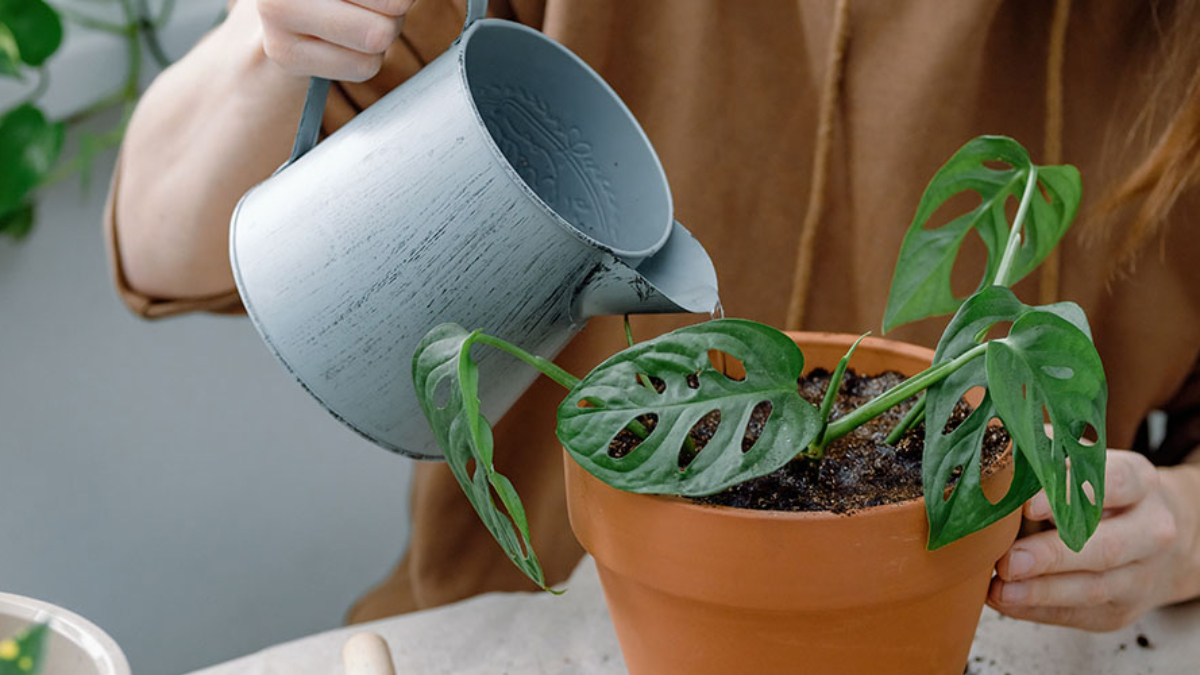




Leave A Comment